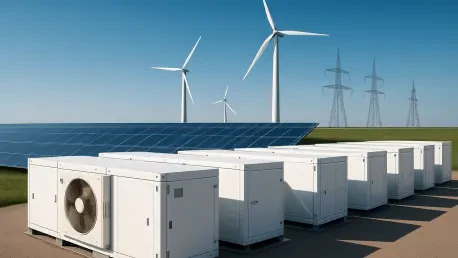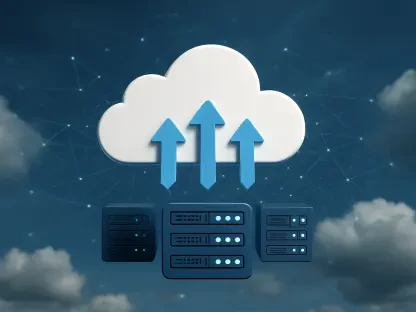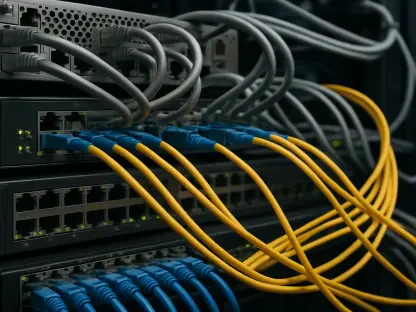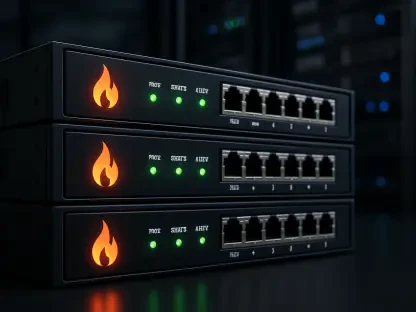What happens when the insatiable hunger for artificial intelligence pushes data centers beyond their limits, threatening to halt the very technology driving global innovation? In 2025, the world of computing faces a critical juncture as AI workloads skyrocket, with individual GPU chips now consuming over 1 kilowatt of power. This staggering demand has exposed the fragility of existing infrastructure, setting the stage for a groundbreaking partnership between Nvidia and Infineon Technologies. Their mission is nothing short of redefining how power systems fuel the future of AI, promising a solution that could transform the industry.
The significance of this collaboration cannot be overstated. As AI becomes the backbone of everything from autonomous vehicles to advanced medical diagnostics, the data centers powering these systems are buckling under unprecedented strain. This story delves into the crisis of power consumption, the innovative response from two tech giants, and the broader implications for sustainability and scalability. It’s a narrative of urgency and ingenuity, highlighting a pivotal moment in the evolution of modern computing.
The Power Struggle Behind AI’s Rise
Data centers, often dubbed the silent engines of the digital age, are grappling with a crisis few saw coming at this scale. Server racks that once operated at 120 kilowatts now demand up to 500 kilowatts, with projections estimating a leap to one megawatt by 2030. This exponential growth, driven by AI’s complex algorithms and high-performance GPUs, has turned power management into a make-or-break challenge for the industry.
The fallout is already evident in operational hiccups across major facilities. Frequent power outages disrupt critical processes, while the reliance on multiple power supplies per rack consumes valuable space and amplifies failure risks. Add to that the excessive heat generated by overworked systems, and it’s clear why traditional setups are no longer viable for the AI era.
This mounting pressure threatens not just efficiency but also the pace of technological advancement. Without a radical overhaul, the costs—both financial and environmental—could stifle AI’s potential to solve some of humanity’s most pressing problems. The stakes are high, demanding a solution that matches the ambition of the technology itself.
Breaking Point of Current Data Center Designs
Beyond sheer consumption, the architecture of today’s data centers reveals deep-rooted inefficiencies. The outdated 54-volt backbone, a relic of older computing needs, struggles to handle the intense demands of modern AI workloads. This mismatch results in significant power losses during conversion and distribution, compounding operational headaches.
Moreover, the patchwork approach of stacking additional power supplies to meet demand has proven unsustainable. Each added unit increases the likelihood of breakdowns, with failure rates climbing as systems overheat in confined spaces. Such inefficiencies translate into spiraling maintenance costs, a burden that many operators can no longer ignore.
Perhaps most alarming is the environmental toll. Energy waste from inefficient power delivery contributes to a larger carbon footprint, clashing with global sustainability goals. If left unaddressed, these systemic flaws could derail the very innovations AI promises, underscoring the urgent need for a paradigm shift in data center design.
Unveiling the 800 VDC Power Breakthrough
Enter the game-changing collaboration between Nvidia and Infineon, which proposes a daring leap to a centralized 800-volt direct current (VDC) system. Unlike the cumbersome 54-volt framework, this approach converts power directly at the GPU level on server boards, slashing losses and boosting reliability. It’s a bold reimagining of how data centers can operate under extreme loads.
A prime example of this innovation is Nvidia’s Kyber rack architecture, built to support 576 Rubin Ultra GPUs for intensive AI inference tasks. Showcased at major industry events like Computex this year, the system has garnered attention for its ability to manage heat more effectively. Meanwhile, the OCP Global Summit in Germany saw over 50 MGX partners rally behind this high-voltage shift, signaling a seismic change in industry standards.
The benefits extend beyond technical specs. By centralizing power delivery, the 800 VDC model minimizes the physical footprint of power units, freeing up space for additional computing resources. This efficiency could redefine scalability, preparing data centers for the gigawatt era while addressing immediate pain points with a forward-thinking design.
Expert Insights on a Power Paradigm Shift
Industry leaders have been quick to endorse this transformative approach, lending credibility to the Nvidia-Infineon vision. Forrester Research analyst Alvin Nguyen highlights how adopting 800 VDC reduces material costs, particularly in copper wiring, by streamlining power distribution. “It’s not just about efficiency; it’s about making systems easier to service and maintain,” Nguyen notes, pointing to long-term operational gains.
Infineon’s Adam White, a key voice in power system innovation, emphasizes the intrinsic link between AI and energy. “AI’s growth is inseparable from power infrastructure,” White asserts. “Our focus is on intelligent solutions that cut downtime and ensure reliability, no matter the workload.” This perspective aligns with Infineon’s commitment to sustainable, high-performance technologies.
Support isn’t limited to individual experts; over 20 industry collaborators have joined the push for higher voltage systems. This collective momentum reflects a shared recognition that current architectures are ill-equipped for future demands, positioning the 800 VDC framework as a cornerstone of next-generation data centers.
Practical Pathways to Adopt 800 VDC Systems
Transitioning to an 800 VDC architecture requires careful planning and investment in new technologies. Data center operators must prioritize advanced power conversion tools capable of handling higher voltages without compromising efficiency. This shift demands a rethinking of existing layouts to accommodate centralized power delivery, a step that could significantly reduce energy waste.
Safety remains a critical concern, as higher voltages introduce risks that must be mitigated through robust mechanisms. Implementing fail-safes and training staff on new protocols will be essential to prevent hazards and ensure smooth operations. Industry guidelines, backed by partnerships like those at the OCP Global Summit, offer a blueprint for minimizing disruptions during this transition.
Looking ahead, scalability must guide adoption strategies. Preparing for power demands that could double from 2025 to 2027 means building systems with flexibility in mind. Operators who act now to integrate 800 VDC solutions will be better positioned to meet future challenges, turning a technical upgrade into a competitive advantage.
Reflecting on a Power Revolution
Looking back, the partnership between Nvidia and Infineon marked a turning point in addressing the power crisis that once threatened to stall AI’s progress. Their introduction of the 800 VDC system tackled inefficiencies head-on, offering a lifeline to data centers overwhelmed by modern workloads. This collaboration proved that innovation could bridge the gap between ambition and infrastructure.
The journey underscored a vital lesson: sustainability and scalability must go hand in hand with technological advancement. As the industry embraced higher voltage systems, it laid the groundwork for a future where gigawatt-era data centers became not just feasible, but efficient. The collective support from experts and collaborators amplified the impact of this shift.
Moving forward, the focus must remain on refining safety protocols and expanding access to cutting-edge power solutions. Stakeholders across the spectrum should prioritize investments in training and technology to sustain this momentum. By building on the foundation established in 2025, the computing world can ensure that AI’s potential is never limited by the systems meant to support it.









